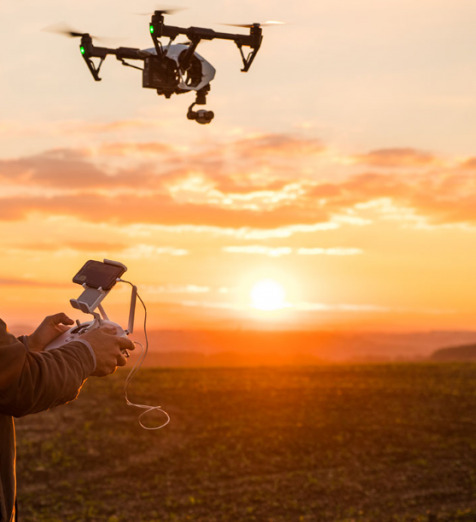Ericsson and NSF research 5G drones for Smart Ag
- September 20, 2022
- William Payne

The US Government’s National Science Foundation and Ericsson are researching the use of 5G enabled drones. Researchers at North Carolina State University have demonstrated detailed lifestock monitoring and edge-based farming analytics using 5G-enabled drones over large areas farmlands using Ericsson based and cloud platforms.
The NC State demonstration showed video streamed from a drone on an Ericsson 5G radio and core network with available uplink speeds over 100 Megabits per second, and downlink speeds over 450 Megabits per second.
According to Ericsson, development of 5G-enabled drone applications will support remote monitoring and assessment of fields, farms, and livestock, and accelerate innovation from university labs to farm use. The team also see applications emerging in logistics and other industrial areas.
Ericsson is working with the AERPAW project within the National Science Foundation, part of the Platforms for Advanced Wireless Research (PAWR) programme based at NC State.
In the demonstration, a custom drone with a connected camera and local compute capacity monitored a field of cattle for information on grazing patterns. Footage from the field was streamed over a 5G connection provided by an Ericsson base station and Ericsson Cloud Packet Core network. The demonstration took place on the mid-band spectrum (3.4 gigahertz) applying 100 megahertz of spectrum under AERPAW’s experimental programme license. Network performance was measured at speeds exceeding 100 Megabits per second in the uplink and more than 450 Megabits per second in the downlink.
The 5G network enabled sustained high-quality video streaming, remote interaction, and edge analytics through a local compute-enabled network node.
Envisaged use cases include agriculture solutions such as animal monitoring and tracking, but also delivery of supplies and objects for commercial use, improved air traffic control under Federal Aviation Administration regulations, and command and control of unmanned aerial vehicles (UAVs) over cellular links.
“Smart agriculture will likely represent a very large growth segment for UAVs in the next decade,” said Mihail L. Sichitiu from AERPAW. “And field testing at sites like AERPAW is critical both for exploring what’s possible and for ensuring operational safety. Only a drone under constant monitoring and control is a safe drone.”
“It’s great to see Ericsson and AERPAW showcasing how collaboration can bring together research and 5G networks to support critical operations supporting public safety and agriculture monitoring,” said Per Wahlen, Vice President and Head of Business Development at Ericsson North America. “Wide-area network coverage is needed to safely expand drone operations beyond visual line-of-sight missions, and this research provides the improved capabilities for more diverse and critical applications.”
AERPAW, based in Raleigh, NC, is one of four testbeds in the Platforms for Advanced Wireless Research (PAWR)) programme supported by the National Science Foundation (NSF)). Its mission is to accelerate fundamental research with unmanned aerial vehicles using 5G wireless communications and networking technologies.





